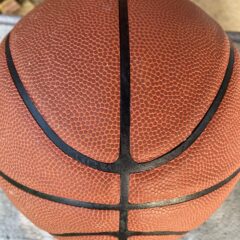I am starting with the assumption that any player is able to do all the different dribbles before starting this drill. If a player is unable to do every dribble, then they should work on those individual dribbles first. Once a player has the ability to do each individual dribble, then they can do this drill.
This is a circuit drill. A player can do this alone or with a partner but the drill is not finished until they have completed all dribbles in the drill. If doing this drill alone, then each dribble should lead straight into the next dribble. If doing this with a partner, then the players should switch who is dribbling after each dribble.
The following list of dribbles is the circuit. The player should go through each dribble before ending the drill. I like to put a set amount of dribbles for each one before continuing to the next dribble. For instance, you could set an amount of 10 or 15 or 20 dribbles for each. Using 10 as an example, that would be 35 right hand dribbles and 35 left hand dribbles to complete the entire circuit. If that is not enough then you could increase that amount to 15 or 20 or any amount you wish.
The dribble circuit is the following 7 dribbles.
- Right Hand Dribble
- Left Hand Dribble
- Crossover Dribble
- Right Hand In-Out Dribbles
- Left Hand In-Out Dribbles
- Right Hand Push-Pull Dribbles
- Left Hand Push-Pull Dribbles
So to complete the circuit it would be right hand dribbles then left hand dribbles. Then crossovers. Followed by in-out dribbles with both hands. And ended with push-pull dribbles with each hand to end the circuit.
Depending on the skill level and how many dribbles the player is doing for each will change the amount of time it takes to complete the drill. This could be something for a young player to do to learn dribbling. This could be something an older player does right before practice to warm up before starting practice.
If you are unsure what each of these dribbles are, I will try to define them as best I can.
1 and 2. Right Hand and Left Hand Dribbles– This is the normal dribble.
3. Crossover Dribble-This is moving the ball from the right hand to the left hand with a bounce on the transfer. The link has a much more in-depth guide to the crossover as well as the other change of direction dribbles.
4 and 5. In-Out Dribbles-The ball will stay in the same hand for the entire time. It is basically a crossover dribble without changing hands. The ball will stay in front of the body the entire time. The ball will start on the right hip for the right hand dribble. The ball is bounced at an angle to put it on the left hip. The right hand moves across and catches the ball. Then the ball is bounced back to the right hip again with a right hand catch. The left hand is the same except using the left hand instead of the right hand.
6 and 7. Push-Pull Dribble-This is an In-Out Dribble except taking place on the side rather than the front. The ball will stay on the side of the body of whichever hand is being used. Right side of body for a right hand dribble. And left side of body for the left hand dribble. The ball starts in the hand extended out in front of the body. It is dribbled so the ball bounces behind the body. The right hand then moves behind the body and catches the ball. Once caught, dribble the ball from behind the body back towards the front of the body. The arm of the hand dribbling should stay extended during each dribble.
This is a stationary dribbling drill. The player can get into a good athletic dribbling position and does not have to move their feet for the duration of the drill. This can be done in a very limited amount of space so it can be done almost anywhere. If you are looking to practice but do not have access to a court or rim, then this drill can be used. This can be used by youth coaches during the practice to work on dribbling. It can be used at the start as a warm-up drill to get all the players touching and dribbling the basketball at the beginning of practice. No matter where the drill is done, this will help every player become a better dribbler.

7 thoughts on “Stationary Dribbling Drill #1”